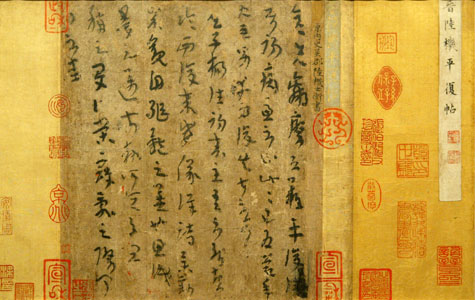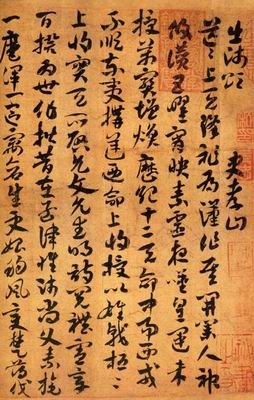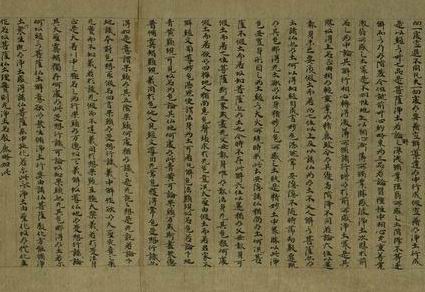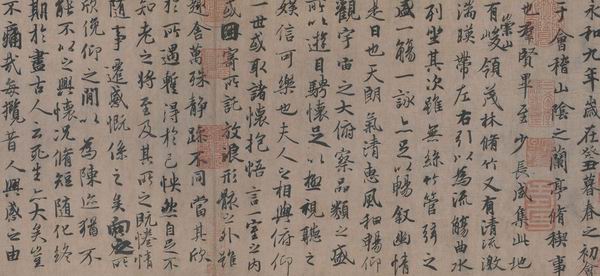Photo Source: www.shanghaimuseum.net
Compiled
by Rachel Hou

Lu Ji (261-303)
Ping Fu Tie
in official-cursive
script
Collection of the Palace Museum
Endowed with extraordinary
talent from his youth, Lu Ji was renowned for his masterpiece in
Chinese literature history, Ode to Literature. Ping Fu Tie is
recognized as the earliest authentic Chinese calligraphy extant today.

Anonymous
Chu Shi Song (Eulogy of Launching the Campaign)
in
official-cursive script
Collection of the Palace Museum
With
vigorous strokes and a compact composition, the calligraphy written in
official-cursive script looks very elegant. It is regarded as a rare piece
handed down from the Sui dyansty.

Hui Xi (? - after 545)
Saddharmapundarika Sutra
in running
script
Collection of the Shanghai Museum
On September 21st, 545
AD (the 11 year of the Datong reign), monk Hui Xi wrote the sutra at the Fahai
Temple. Featuring with a neat composition and well-disciplined brushwork, this
calligraphic work is a precious piece of the Western Jin dynasty.

Feng Chengsu(active in the 7th century)
Copy of
Lan Ting Xu Tie
in running script
Collection of
the Palace Museum
Feng Chengsu(active in the 7th century), was
proficient in calligraphy with delicate brushstrokes. This scroll has also been
labeled as "Holy Dragon Version" because it has the Tang Emperor Li Xian's seal
mark "Holy Dragon".

Zhai Qian (? - after 659)
Saddharmapundarika Sutra,
Volume 3
in small regular script
Collection of the Shanghai
Museum
This scroll of sutra was written by monk Zhai Qian in the 4th
year of Xianqing reign (659 AD) of the Tang dynasty. With a very regular and
orderly composition, it represents the typical calligraphic style of the Tang
dynasty.

Anonymous (Tang 618-907)
Copy of
Huang Ting Jing (Classic of the Yellow Court)
in
regular script
Collection of the Palace Museum
There is no
signature or seal mark of the calligrapher on the scroll. The original Huang
Ting Jing was written in 356 AD, the 12th year of the Yonghe reign of the
Eastern Jin dynasty. As a copy of the Tang dynasty, this piece transcribed in a
graceful and vigorous handwriting shows a typical style of the Tang samll
regular script.



